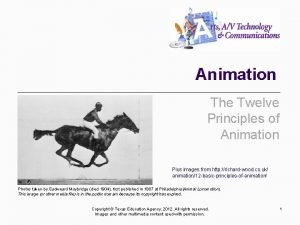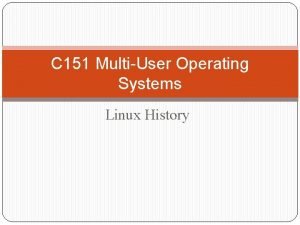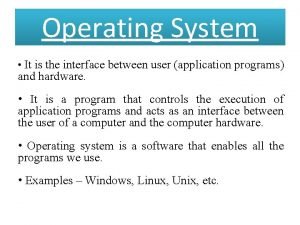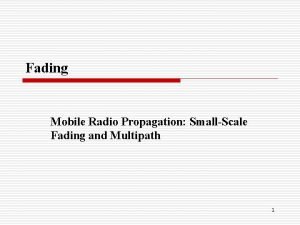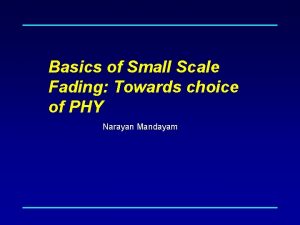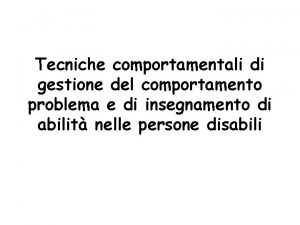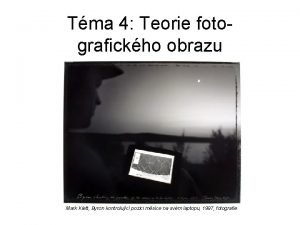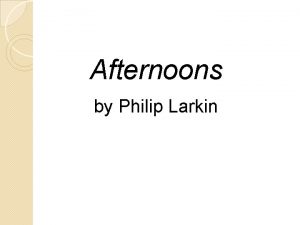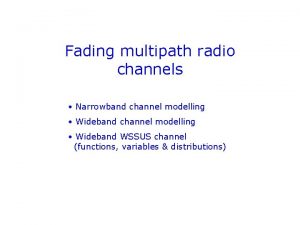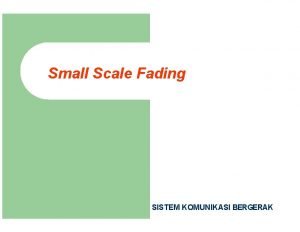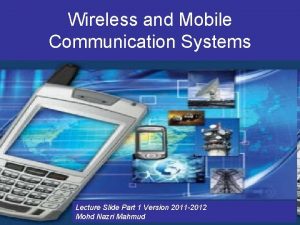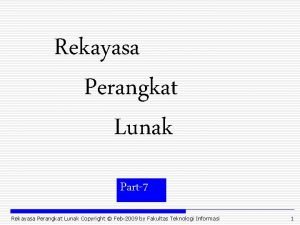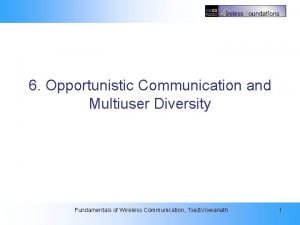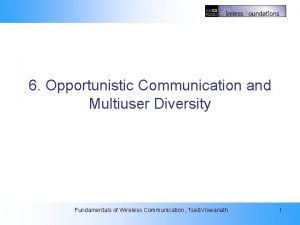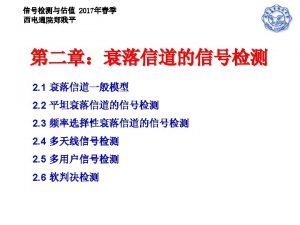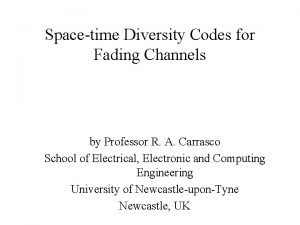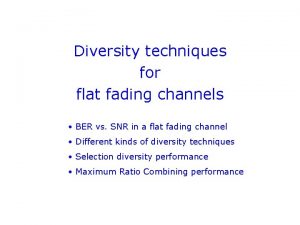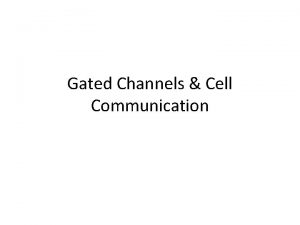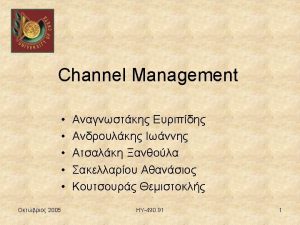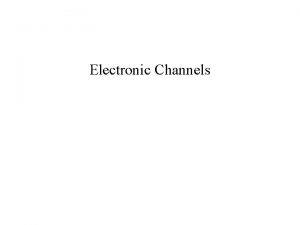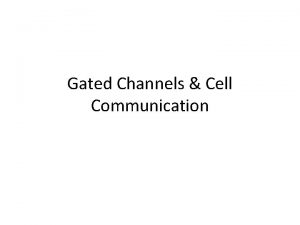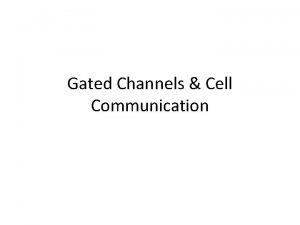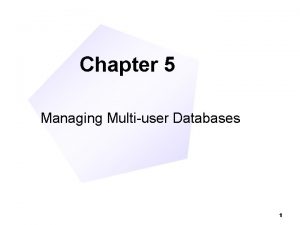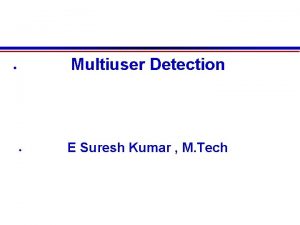Multiuser diversity in slow fading channels Reference Opportunistic
















- Slides: 16

Multi-user diversity in slow fading channels Reference: “Opportunistic Beamforming Using Dumb Antennas” P. Vishwanath, D. Tse, R. Laroia, IT 2002 Presented by: Sarandeep Bhatia sb 344@njit. edu 1

Review n Fading : Rapid fluctuations of signal strength due to constructive and destructive interference between multipaths. n Diversity : Technique to compensate for fading channel impairments. It can be obtained over: Time - Interleaving of coded bits Frequency – Spread spectrum & frequency hopping Space – Multiple antennas Fast fading channels : Diversity inherent Slow fading channels: Diversity induced sb 344@njit. edu 2

Focus on downlink of wireless communication Multiple antennas at the base station to transmit the same signal. Fundamental difference : “Multi-user diversity takes advantage of rather than Compensate fading” sb 344@njit. edu 3

Opportunistic Beam forming The information bearing signal at each of the transmit antenna is multiplied by a random complex gain. Formation of random beam. sb 344@njit. edu 4

Slow Fading Environment : Before sb 344@njit. edu 5

Slow Fading Environment : After sb 344@njit. edu 6

Fading channel is Better Than AWGN Total average SNR = 0 d. B. Long term total throughput can be maximized by always serving the user with the strongest channel. sb 344@njit. edu 7

Maximizing information theoretic capacity n Strategy – --In a large system with users channels fading independently, there is likely to be a user with a very good channel at any time. --Schedule to the user with best channel to transmit to base station. n Assumption – --Channel tracked by receiver and SNR fed back to BS. --Peak transmit power constraint. sb 344@njit. edu 8

Issues in scheduling n Fading statistics identical: -- Strategy not only maximizes the total capacity but also throughput of individual users. n Fading statistics different : Two major issues -- Fairness -- Delay sb 344@njit. edu 9

Proportional Fair Scheduling At time slot t, given § User’s average throughputs T 1(t), T 2(t)…in past window of time tc § Feedback of channel quality in terms of requested data rate R 1(t), R 2(t)… § Schedule the user ‘k’ with the highest ratio Rk = current requested rate of user k Tk = average throughput of user k in the past tc time slots. Average throughputs Tk (t) updated by an exponential filter. sb 344@njit. edu 10

Inspection of algorithm n When tc is small- Serves all users n When tc is large -- Case-1 : Identical channels Tk remains same. Pick user with greater Rk. -- Case-2 : Different channels If Tk is large then Rk is also large. Pick user with greater sb 344@njit. edu 11

Comparison with space time code n n Space time code : Intelligent use of transmit diversity to improve reliability of point-to-point link but reduce multiuser diversity gain. In contrast, opportunistic beam forming requires no special multi-antenna encoder or decoder nor MIMO channel estimation. Use of separate pilot signals for each antenna in space time codes. Antennas are truly dumb, but yet can surpass performance of space time code (with proportional scheduling). sb 344@njit. edu 12

Overall performance Improvement sb 344@njit. edu 13

Cellular Environment : Opportunistic Nulling n In a cellular systems, users are scheduled when their channel is strong and interference from adjacent base station is weak. n Multi-user diversity allows interference avoidance as there is beamforming to some users and null to other users. n Opportunistic beamforming combined with opportunistic nulling. sb 344@njit. edu 14

Conclusion § Modern design principle : “Large and Rapid channel fluctuations are preferable” § Proactive Stance : “Induce Larger and Faster Channel fluctuations” § Requirement : -- Sufficient number of users in the system -- Scheduling algorithm sb 344@njit. edu 15

Questions? ? sb 344@njit. edu 16
 Slow in slow out animation
Slow in slow out animation Smartuml
Smartuml Multiuser operating system
Multiuser operating system Interface between user and hardware
Interface between user and hardware Types of small scale fading
Types of small scale fading Who am i that the lord of all the earth
Who am i that the lord of all the earth Kinetics of crystal violet fading
Kinetics of crystal violet fading Narayan mandayam
Narayan mandayam Fading psicologia
Fading psicologia Henry peach robinson fading away
Henry peach robinson fading away Afternoons philip larkin
Afternoons philip larkin Fading
Fading Narrowband fading
Narrowband fading Small scale fading adalah
Small scale fading adalah Henry peach robinson fading away
Henry peach robinson fading away Large scale fading in wireless communication
Large scale fading in wireless communication Opportunistic approach adalah model proses
Opportunistic approach adalah model proses
